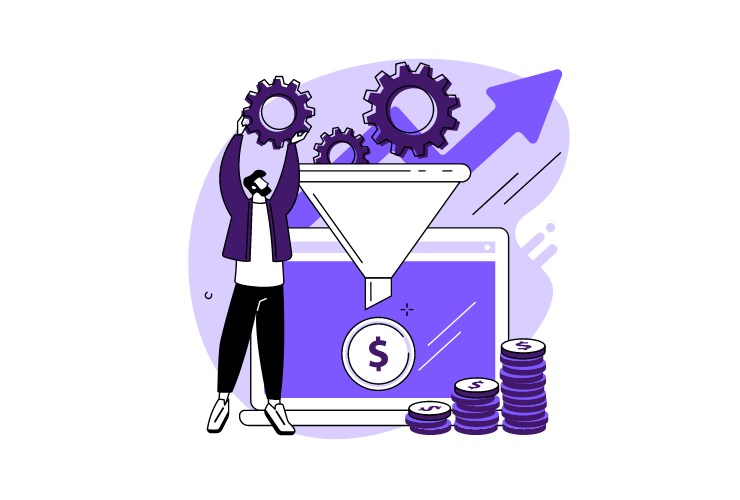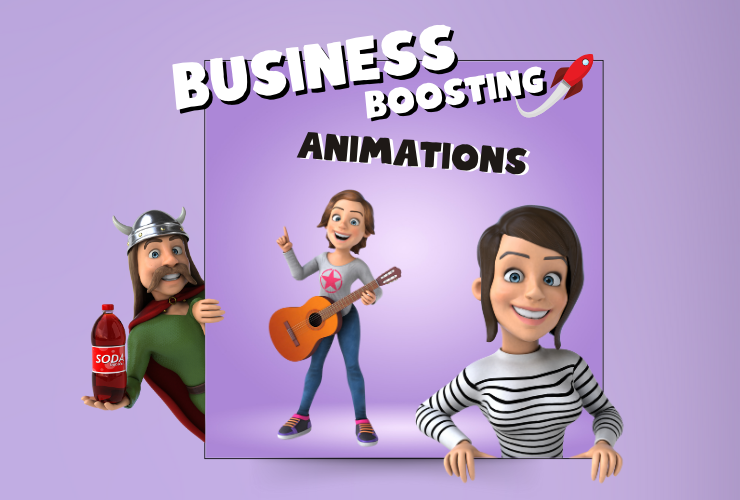7 Ways To Improve Conversion Rates on Your Site- Sow Dream
In today's fast-paced digital landscape, having a stunning website is just the beginning; the real challenge lies in converting visitors into loyal customers. Whether you run an e-commerce platform, a blog, or a service-based website, a high conversion rate is essential for achieving your business goals.
In this blog, we'll walk you through seven effective strategies that will help you optimize your website to its full potential. From crafting compelling call-to-action (CTA) buttons to implementing user-friendly navigation, we'll explore proven techniques that can turn casual browsers into engaged users. Additionally, we'll discuss the importance of A/B testing, understanding user behavior, and leveraging social proof to build trust among your audience.
So, if you're eager to boost your website's conversion rates and drive meaningful results, let's dive in and discover the key ingredients for online success!
Understand Your Audience
Understanding your audience is the foundation of any successful website optimization strategy. By delving into the preferences, needs, and behaviors of your target market, you can tailor your content and user experience to resonate deeply with potential customers. Here are three vital steps to help you gain a profound understanding of your audience:
A. Conducting Market Research
Thorough market research is a critical starting point. Explore your industry, competitors, and current trends to identify gaps and opportunities. Utilize tools like Google Trends, keyword research, and industry reports to uncover valuable insights. Pay attention to customer feedback, reviews, and comments to understand pain points and desires better.
B. Analyzing User Behavior
Harness the power of website analytics to gain actionable data on user behavior. Tools like Google Analytics can provide valuable information, such as user demographics, traffic sources, and popular pages. Analyze user flow and behavior on your site to spot drop-off points and areas for improvement.
C. Creating Buyer Personas
Developing detailed buyer personas is an effective way to humanize your audience. Craft fictional representations of your ideal customers, including their demographics, preferences, goals, and challenges. These personas will serve as guiding beacons for tailoring your content and messaging to meet the specific needs of different user segments.
Optimize Website Design and User Experience
The design and user experience of your website play a crucial role in shaping visitors' perceptions and driving conversion rates. A seamless and intuitive user interface can make all the difference in encouraging visitors to take action. Here are three key aspects to focus on when optimizing your website design and user experience:
A. Streamlined Navigation
Simplify your website's navigation to create a user-friendly browsing experience. A cluttered or confusing menu structure can deter visitors from exploring further. Organize your content into logical categories and use clear, descriptive labels for navigation items. Implement a search function to enable users to find what they're looking for quickly. Smooth navigation ensures that users can effortlessly move through your site and find the information or products they need, increasing the likelihood of conversion.
B. Clear Call-to-Actions (CTAs)
Strategically placed and well-designed CTAs are vital for guiding visitors towards the desired actions on your site. Use persuasive language that encourages users to take the next step, whether it's making a purchase, signing up for a newsletter, or contacting your team. Employ contrasting colors and design elements to make the CTA buttons stand out. A compelling CTA captures visitors' attention and motivates them to convert, contributing to a higher conversion rate.
C. Responsive and Mobile-Friendly Design
In today's mobile-centric world, having a responsive and mobile-friendly design is no longer optional—it's a necessity. Ensure that your website adapts seamlessly to various screen sizes and devices, providing an optimal viewing experience for mobile users. A mobile-friendly design not only improves user experience but also positively impacts search engine rankings. As an increasing number of users browse the internet on their smartphones and tablets, a mobile-responsive website can significantly boost your conversion rates.
Create Compelling and Relevant Content
Content is the lifeblood of your website, and it has the power to engage, inform, and persuade your visitors. When done right, compelling and relevant content can significantly impact your conversion rates. Here are three key strategies to enhance your content and drive conversions:
A. High-Quality Copywriting
The words you use on your website can make or break your chances of converting visitors into customers. Invest in high-quality copywriting that is clear, concise, and persuasive. Craft compelling headlines that capture attention and entice users to explore further. Use persuasive language that highlights the benefits of your products or services and addresses the needs of your target audience. Avoid jargon and technical language that might confuse or alienate potential customers. Well-crafted copy builds trust, credibility, and a strong connection with your audience, increasing the likelihood of conversion.
B. Addressing Customer Pain Points
Understand your customers' pain points and challenges, and create content that directly addresses these issues. Offer valuable solutions and insights that demonstrate your expertise and willingness to help. Whether through blog posts, guides, or FAQs, providing relevant and helpful content establishes your brand as a reliable resource, fostering trust and encouraging visitors to take the desired actions.
C. Utilizing Visual Content (Images, Videos, Infographics)
Visual content has a remarkable ability to capture attention and convey complex information quickly. Integrate high-quality images, videos, and infographics throughout your website to enhance the overall user experience. Product images can showcase your offerings in the best light, while videos can provide demonstrations, testimonials, or storytelling that resonates with your audience. Infographics can present data and statistics in a visually appealing and digestible format. By leveraging visual content, you create an engaging and immersive environment that captivates visitors, encouraging them to stay longer and increasing the chances of conversion.
Implement A/B Testing
A/B testing, also known as split testing, is a powerful technique that allows you to optimize your website by comparing two different versions of a page and determining which one performs better. By leveraging data-driven insights, you can make informed decisions that lead to improved conversion rates. Let's dive into the essential steps of successful A/B testing:
A. Understanding A/B Testing
A/B testing involves creating two versions of a webpage: version A (the control) and version B (the variation). These versions are presented to separate groups of users, and their interactions are measured and compared. The objective is to identify which version produces a higher conversion rate. A/B testing helps you understand how changes to specific elements on your site impact user behavior and, ultimately, conversions.
B. Identifying Elements to Test (CTAs, Headlines, Colors, etc.)
To conduct effective A/B tests, focus on testing one element at a time. Common elements to test include call-to-action (CTA) buttons, headlines, colors, images, and page layouts. For example, you can experiment with different CTA text, button colors, or button placements to see which combination yields the best results. By systematically testing individual elements, you gain valuable insights into what resonates most with your audience.
C. Analyzing and Applying Results
Once you've gathered sufficient data from your A/B tests, analyze the results to determine the winning variation. Identify which version performed better in terms of conversion rates. Implement the successful variation permanently on your site to enjoy improved results. It's crucial to note that A/B testing should be an ongoing process, as consumer behavior and preferences may evolve over time. Continuously test new elements and variations to refine your website's performance continually.
Leverage Social Proof and Testimonials
In today's digital landscape, building trust with your website visitors is paramount to improving conversion rates. Social proof and testimonials are powerful tools that can establish credibility, reliability, and authenticity for your brand. Here are two effective ways to leverage social proof and customer testimonials:
A. Showcasing Customer Testimonials
Customer testimonials provide real-life accounts of your product or service's value, reinforcing your brand's credibility. Reach out to satisfied customers and request feedback or testimonials that highlight their positive experiences with your offerings. Showcase these testimonials prominently on your website, preferably on the homepage or product pages, where potential customers are likely to see them. Use a mix of text-based testimonials, video testimonials, and star ratings to create a compelling and diverse collection of customer feedback.
B. Displaying Trust Signals (Awards, Certifications, Reviews)
Trust signals are visual cues that reassure visitors about your brand's reliability and reputation. Display any awards, certifications, or accreditations your business has received prominently on your site. These endorsements act as seals of approval, indicating that your products or services meet industry standards. Additionally, incorporate reviews from trusted third-party sources, such as Google Reviews or Trustpilot, to further reinforce your credibility. Positive reviews from external platforms can significantly influence potential customers' decisions, encouraging them to convert.
Optimize Page Loading Speed
In today's fast-paced digital world, website visitors have little patience for slow-loading pages. A swift and responsive website is crucial for keeping users engaged and boosting conversion rates. Let's explore three essential strategies to optimize your page loading speed:
A. Importance of Page Speed on Conversions
Page loading speed directly impacts user experience and plays a significant role in driving conversions. Research shows that even a one-second delay in page load time can result in higher bounce rates and decreased customer satisfaction. Visitors are more likely to abandon a website that takes too long to load, leading to missed opportunities for conversions. On the other hand, a faster-loading website enhances user satisfaction, encourages longer browsing sessions, and ultimately increases the likelihood of conversions.
B. Compressing Images and Files
Large image and file sizes can significantly slow down page loading times. Compressing images and files without compromising on quality is an effective way to reduce page load times. Utilize image optimization tools or plugins to automatically compress images on your website. Additionally, consider using modern image formats, such as WebP, that offer better compression and faster loading. Minimize the use of unnecessary multimedia elements and large files to create a leaner, faster-loading website.
C. Utilizing Content Delivery Networks (CDNs)
A Content Delivery Network (CDN) is a network of servers distributed across different geographical locations. CDNs work by storing cached copies of your website's static files, like images, CSS, and JavaScript, on these servers. When a user visits your website, the CDN serves these files from the server nearest to the user's location, reducing latency and improving page loading speed. By distributing the load across multiple servers, CDNs can handle high traffic volumes more efficiently, further enhancing user experience and conversion rates.
The Bottom Line
In conclusion, by implementing these seven proven strategies, you can enhance your website's conversion rates and unlock its full potential. Understanding your audience, optimizing user experience, and leveraging social proof are the keys to building trust and driving action. A/B testing and faster page loading ensure continuous improvement and a seamless user journey. Embrace these techniques, and watch your website flourish as it transforms casual visitors into loyal customers. Happy converting!






